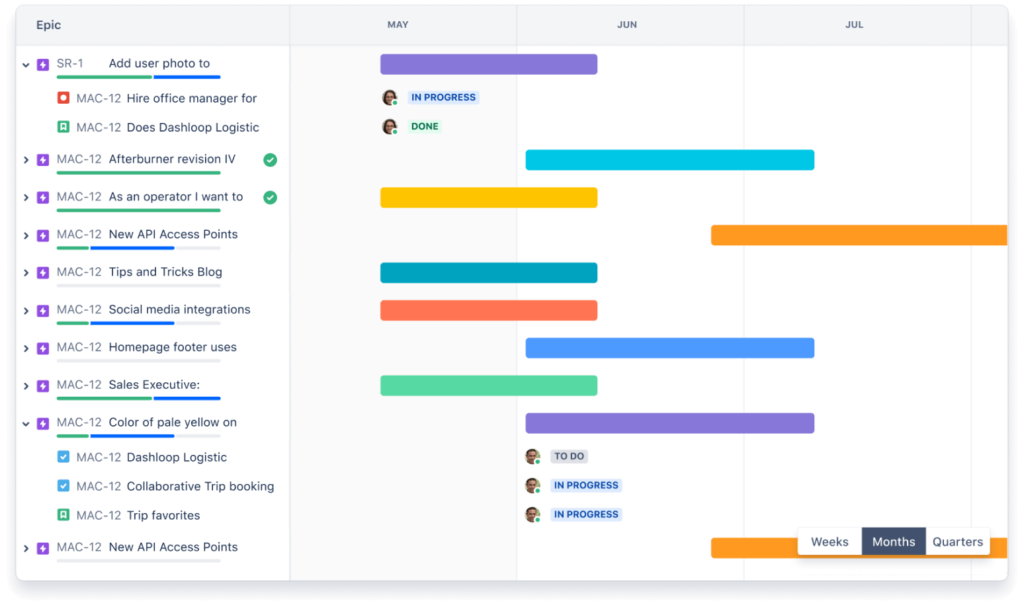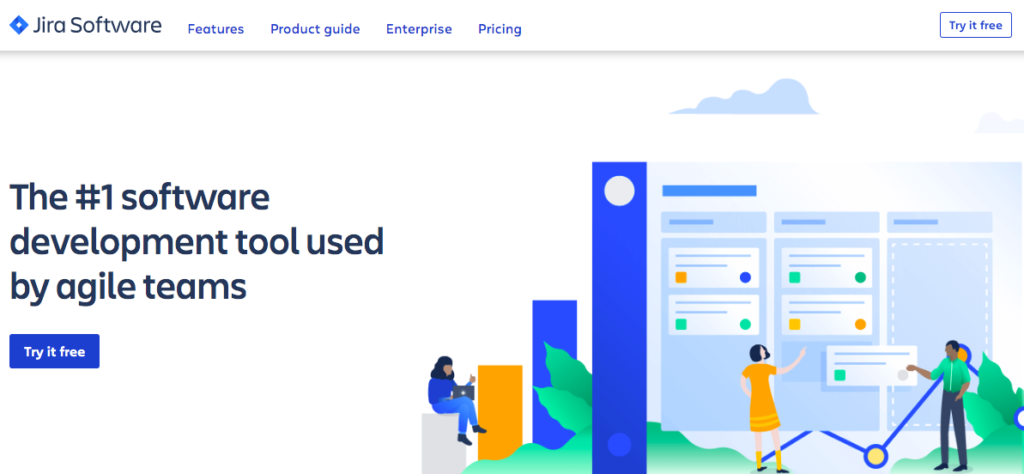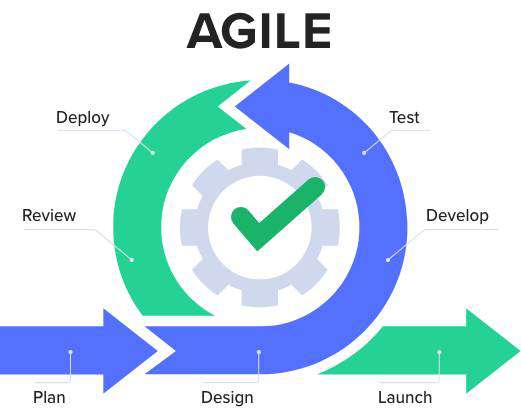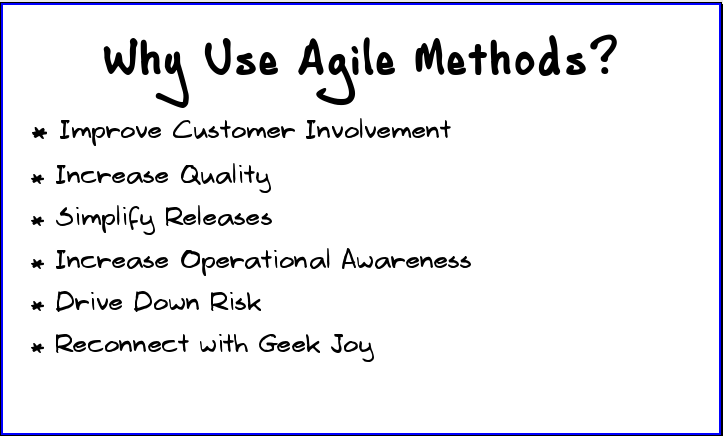Table of Contents
Ah, the world of project management! Where tasks are as unpredictable as the weather, and timelines can sometimes feel like wishful thinking. If you’ve ever tried juggling multiple tasks while sipping coffee, answering emails, and daydreaming about that upcoming vacation, you’re in the right place. (And if you’ve never dropped the ball, well, are you even human?)

But fear not, dear reader! For in this vast universe of to-do lists and endless meetings, there’s a beacon of hope. A tool that promises not just to keep your projects on track, but also to make the journey enjoyable. Enter Jira, the superhero of project management tools. (No, it doesn’t wear a cape, but it sure does pack a punch!)
Before we embark on this enlightening journey, let’s set the stage with a dash of humor, a sprinkle of relatability, and a promise: By the end of this article, you’ll not only know what Jira is but might even have a tiny software crush. Ready to dive in? Let’s unravel the magic of Jira!
In today’s dynamic world, organizations are continuously seeking tools to manage projects efficiently. Enter Jira, a platform designed to transform the way teams work. But what exactly is Jira? Let’s delve into its world.
What is Jira?
At its core, Jira is more than just a project management tool—it’s a collaborative ecosystem tailored to help teams streamline their workflow, communicate efficiently, and deliver exceptional results.

- Origins: Developed by Atlassian, an Australian enterprise software company, Jira was initially designed to serve as a bug and issue tracker. Over time, realizing the broader spectrum of project management needs, Atlassian expanded Jira’s capabilities, making it the multifaceted platform it is today.
- Namesake: The name “Jira” is derived from the Japanese word “Gojira”, which means “Godzilla”. This is a nod to its initial purpose of tracking bugs (monsters) in software.
- Flexibility and Customization: What sets Jira apart is its unparalleled flexibility. Whether you’re managing a software development project, orchestrating a marketing campaign, or even organizing academic research, Jira can be molded to fit your requirements. Its extensive customization options mean that it can be tailored to match the unique workflow of any team.
- Modules and Components: Jira isn’t a monolithic entity. It’s made up of various modules and components, each designed to cater to specific facets of project management. From creating and assigning tasks (issues) to visualizing project progression (via boards), Jira provides tools for every stage of a project.
- Integration-First Approach: In today’s interconnected digital landscape, no tool operates in isolation. Recognizing this, Jira is built with an integration-first mindset. It seamlessly connects with a plethora of other tools, ensuring that teams can work in a cohesive, interconnected environment.
- User-Centric Design: Jira places its users at the heart of its design philosophy. Its intuitive interface ensures that even those new to project management can quickly get on board. Features like drag-and-drop tasks, color-coded issue statuses, and customizable dashboards make the user experience smooth and enjoyable.
- Global Presence: Testament to its efficacy, Jira is trusted by millions of users across the globe, ranging from startups to Fortune 500 giants. Its ability to cater to diverse industries and varied team sizes underscores its versatility and robustness.
In essence, Jira is not just a tool but a holistic platform that empowers teams to bring their visions to life, ensuring that from ideation to execution, every step is streamlined, transparent, and efficient.
Why Jira?

Choosing the right project management tool can be daunting, given the myriad of options available. Yet, Jira stands out, and here’s why:
Jira’s strength lies in its adaptability. Whether you’re a software development team employing Agile methodologies or a marketing team coordinating a new campaign, Jira can be tailored to fit various projects’ intricacies. Its modular design allows you to add or remove features based on your specific requirements.
In the modern digital age, instantaneous communication is vital. Jira fosters real-time collaboration by providing a platform where teams can communicate, share feedback, solve problems, and track progress—all in one unified space. Its commenting system, tagging features, and notification alerts ensure that every team member stays in the loop.
- Transparency and Visibility: One of Jira’s standout features is its commitment to project transparency. With its visual boards and detailed logs, every stakeholder—from team members to managers—gets a clear view of the project’s status. This transparency not only helps in tracking progress but also aids in early identification of potential roadblocks or bottlenecks.
- Robust Reporting: Data-driven decision-making is crucial for project success. Jira offers a suite of powerful reporting tools, from burndown charts to velocity metrics. These reports provide insights into team performance, project progression, and areas of improvement, ensuring that decisions are backed by concrete data.
- Seamless Integrations: No tool is an island in today’s interconnected tech landscape. Jira’s ability to integrate seamlessly with a multitude of other platforms—from code repositories like GitHub to communication tools like Slack—ensures a cohesive workflow. This interconnectedness reduces manual data transfers, streamlines processes, and boosts productivity.
- Scalability: Whether you’re a startup with a small team or a multinational corporation with thousands of employees, Jira scales to fit your needs. Its infrastructure is designed to handle the demands of growing teams, ensuring that as your projects expand in complexity and size, Jira remains efficient and responsive.
- Customizable Workflows: Every team has its unique workflow. Jira acknowledges this by allowing teams to design and customize their workflows. From defining task stages to automating certain actions, Jira’s workflow customization ensures that the platform mirrors your team’s operational nuances.
- Community and Support: Beyond the tool itself, Jira boasts a vibrant community of users, developers, and enthusiasts. This community is a treasure trove of resources, tutorials, plugins, and solutions. Additionally, Atlassian’s dedicated support ensures that any challenges faced are promptly addressed.
In summary, Jira isn’t just another project management tool. It’s a comprehensive solution designed with modern teams in mind, aiming to simplify complexities, enhance collaboration, and drive project success.
The Heart of Jira – Agile:
When discussing Jira, it’s impossible not to touch upon the concept of Agile, as the two are inextricably linked. But what exactly is Agile, and why is it so central to Jira?

- Agile: A Brief Overview: Agile isn’t just a methodology; it’s a mindset. Born in the realm of software development, Agile emphasizes flexibility, collaboration, and customer feedback. It’s about adapting to changes, breaking projects into smaller, manageable tasks (often called ‘iterations’ or ‘sprints’), and continuously assessing and adjusting project direction based on team feedback and customer needs.
- Jira and Agile – A Perfect Union: Jira was crafted with Agile principles at its core. It’s tailored to support Agile workflows, making it an ideal platform for teams practicing Scrum, Kanban, or any other Agile methodology. Whether it’s managing product backlogs, sprint planning, or retrospective assessments, Jira provides tools and features that streamline Agile processes.
- Scrum with Jira: Scrum is one of the most popular Agile frameworks, and Jira is well-equipped to support it. Teams can create ‘sprints’, assign user stories, track sprint progress, and conduct retrospectives, all within Jira. The platform’s visual boards give a snapshot of ongoing sprints, allowing teams to monitor progress and make necessary adjustments.
- Kanban and Jira: For teams prioritizing continuous delivery over iterative development, Kanban is the go-to Agile approach. Jira’s Kanban boards provide a visual representation of tasks as they move through predefined stages, from ‘To Do’ to ‘Done’. With features like WIP (Work In Progress) limits, Jira’s Kanban boards help teams optimize flow and reduce bottlenecks.
- Agile Reporting: In line with Agile’s data-driven approach, Jira offers a suite of reports tailored for Agile projects. From burndown charts that track sprint progress to velocity charts that measure team performance across sprints, Jira ensures teams have the insights they need to optimize their Agile processes.
- Continuous Feedback Loop: One of Agile’s core tenets is the emphasis on feedback. Jira facilitates this by providing tools for continuous feedback collection, be it through comments on tasks, integration with testing tools for bug tracking, or features that allow customers to provide feedback directly.
- Customizability for Various Agile Flavors: While Scrum and Kanban are well-known, there are numerous Agile flavors, each with its nuances. Jira’s customization capabilities ensure that, be it Scrumban (a mix of Scrum and Kanban) or any other variant, teams can tweak Jira to fit their specific Agile framework.

Jira’s Main Features Explained:
Jira is a powerhouse of features designed to simplify, optimize, and enhance project management. Let’s break down some of these essential features:
| Issues and Tasks | At the heart of Jira lies the concept of ‘issues’, which can be any unit of work. Each issue can be detailed with descriptions, attachments, custom fields, and more. | ✅ |
| Customizable Workflows | Jira’s workflows allow teams to define how a task moves from inception to completion. This visual representation ensures everyone understands the process. | ✅ |
| Boards | Jira’s boards provide a visual representation of tasks, suitable for Scrum or Kanban methodologies. | ✅ |
| Search and Filters | Jira’s powerful search, combined with its query language (JQL), allows for precise filtering and searching. | ✅ |
| Reports and Dashboards | Jira offers a plethora of reports, providing data-driven insights. Customizable dashboards give a snapshot of project health. | ✅ |
| Integrations and Add-ons | Jira can be extended and integrated to fit into any tool ecosystem, making it versatile and adaptive. | ✅ |
| Permissions and Security | Jira’s granular permission system allows detailed access control, ensuring data confidentiality and security. | ✅ |
| Notifications and Communications | Jira’s notification system ensures that team members are alerted to updates, promoting collaboration and feedback. | ✅ |
| Mobile Access | Jira’s mobile applications ensure that tracking, updating, and managing projects on the go is seamless. | ✅ |
| Agile Tools | Jira is deeply integrated with Agile methodologies, offering tools tailored for Agile processes. | ✅ |
| Time Tracking | Jira’s built-in time tracking allows team members to log hours against tasks, providing insights into effort. | ✅ |
Types of Jira’s:
- Jira Software: Initially developed for software teams, it supports Scrum and Kanban. Ideal for product development and bug tracking.
- Jira Service Management: Designed for IT and operations teams, it aids in service request management and incident resolution.
- Jira Work Management: For business teams, it’s perfect for HR, finance, and marketing projects.
- Jira Align: Tailored for enterprise-level planning, it links strategic objectives with team execution.
Extensions and Integrations:
Jira isn’t just a standalone tool. Its power is magnified when integrated with other platforms. Whether it’s syncing with communication tools like Slack, documentation platforms like Confluence, or version control systems like Bitbucket, Jira’s versatility shines through.
Moreover, the Atlassian Marketplace is a treasure trove of apps and integrations, enhancing Jira’s functionalities.
Security and Accessibility:
Jira ensures that your data remains secure. Teams can set permissions, ensuring that sensitive tasks remain confidential. Plus, with its mobile app, team members can stay connected, irrespective of their location.
Starting with Jira:
If you’re new, starting with Jira might seem daunting. But fear not! Atlassian offers a plethora of resources, tutorials, and community forums. So, whether you’re setting up your first board or customizing a complex workflow, help is always at hand.
Final Toughts
So, after diving deep into the world of Jira, it’s clear that this isn’t just another tool—it’s more like the Swiss Army knife of project management. And if you’re wondering whether Jira wears a cape in the software world, well, you wouldn’t be entirely wrong!
Remember the days when you’d lose that all-important sticky note or when the whiteboard just wasn’t big enough for your grand project plans? Jira’s here to say, “Those days? Ancient history. Welcome to the future!” And while Jira might not make your morning coffee or laugh at your jokes (yet), it sure does make managing projects feel almost… fun?
Jokes aside (because let’s admit, project management humor is a niche genre), connecting with a tool is just like building a relationship. It takes time, understanding, and a few date nights exploring dashboards and workflows. But once you get the rhythm, it’s a harmonious dance of productivity and success.
So, whether you’re a seasoned project manager, a newbie trying to navigate the Agile waters, or someone who just really enjoys a well-organized task list (we see you!), Jira is here to be your digital sidekick. Ready to embark on this journey? Buckle up, and let’s make project management legendary!
